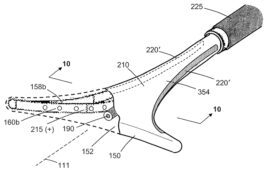Building a strategic patent portfolio is crucial to success for a medtech startup.
David J. Dykeman, Greenberg Traurig

[Image from Unsplash]
In order to safeguard its intellectual property (IP), every medtech startup should consider these five tips for protecting and leveraging its innovations.
1. File early and file often
Fundamental to a strong patent portfolio is establishing solid patent protection for a company’s core technology. First, one or a series of patent applications should be filed providing the broadest possible patent protection covering the core technology. As the core technology evolves, incremental improvements and varying applications should be patented to form a “picket fence” of protection around the core technology.
Medtech startups should file patent applications as early and as often as their budget permits. This has been particularly true since the passage of the America Invents Act in 2011, which brought the United States into conformance with the rest of the world as a first-to-file country. Thus, a key is to file patent applications before any public disclosure that could limit patent coverage. To ensure both U.S. and international patent coverage, a patent application should be filed before the invention is first published, disclosed, used or offered for sale. Savvy companies file patent applications early and often.
2. Proactive patenting
To build a patent portfolio faster, early-stage medtech companies should consider utilizing the United States Patent and Trademark Office (USPTO) fast track patent examination programs.
Due to the USPTO’s backlog of about 540,000 patent applications, it can take three years or more for a medtech patent application to obtain its final decision and issue as a patent. In contrast, the USPTO Track I prioritized examination program strives to achieve a final go or no-go decision for a patent application within 12 months of filing. Track I prioritized patent applications are often allowed in as little as 6 months. Other ways to accelerate USPTO examination include the Patent Prosecution Highway program based on an issued foreign patent or a favorable search report, and the age-based program which speeds up examination for inventors 65 or older.
The USPTO Track I prioritized examination program is more expensive than regular examination and accelerates costs that would normally be spread over a few years. However, early-stage medtech companies should still utilize these programs for their key patent applications to quickly obtain an issued patent with claims covering the most important features of the product. Additional patent applications with claims of different scope can be filed via regular examination to build multiple layers of patent protection around the company’s core technology.
3. Patents attract financing
Medtech startups need a strategic patent position that protects against potential competitors and entices investment from venture capitalists. In today’s innovative economy, a medtech company’s success depends on the strength and value of its patent portfolio. For early-stage medtech companies, patents are often the only way for investors to place value on the company’s technology and judge the potential success before sales, which often only begin after FDA regulatory approval. Strategic patents can also lead to joint ventures, collaborations and licenses with strategic partners.
“When evaluating whether to invest in a startup medtech company, patents are critical,” said Dr. Omar Amirana, a serial entrepreneur and SVP at Allied Minds (Boston), an investor in medical companies.
“The core technology must have solid patent protection to provide flexibility and room to operate in a desirable market,” Amirana said.
4. Know your competitors’ patents
In addition to building their own patent portfolio, early-stage medtech companies should also become familiar with the prior art patent landscape of competitors in their technology space. Knowledge of the patent landscape can help companies further focus their product development and patent strategy.
Review of the relevant patent landscape can identify technology spaces with fewer barriers for entry due to light patent coverage. By obtaining patent coverage in a technology space with fewer competitors, a medtech company can carve out its patent niche and become a dominant player in that space. Also, filing patents covering improvements to competitor’s products can provide significant control over competitor’s product enhancement options. Knowledge of prior art may help companies prepare stronger patent applications that anticipate potential rejections during USPTO examination.
5. Don’t forget about trade secrets
When used in conjunction with or as an alternative to patents, trade secret protection can provide a viable option to protecting the IP of the medtech company. Trade secret protection involves protecting ideas by taking measures to keep them secret, possibly avoiding the effort and expense associated with filing patent applications. Trade secrets can provide protection for as long as the underlying technology is kept secret, but any public disclosure loses the protection. The algorithms that drive digital health and mobile medical applications are often candidates for trade secret protection.
The path to patent success
In the dynamic medtech market, a strong patent strategy is crucial for securing investment and gaining market share. Maintaining a valuable patent portfolio requires that companies periodically perform a patent audit to assess the strengths, weaknesses and gaps in the patent portfolio. By developing a strategic patent portfolio quickly and successfully, a medtech startup can navigate a path to commercial success.
David J. Dykeman is a registered patent attorney with more than 20 years of experience in patent and intellectual property law, and co-chair of Greenberg Traurig’s global Life Sciences & Medical Technology Group. David’s practice focuses on securing worldwide intellectual property protection and related business strategy for medtech clients, with particular experience in medical devices, wearables, robotics, life sciences and information technology.








